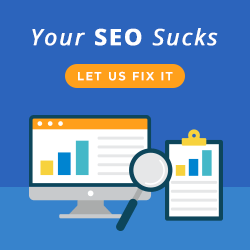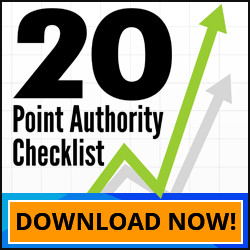Optimising your website usability is just as important as optimising for the search engines, as a poorly-built site will drive your visitors away on the “bounce”!
A well-built site that is easily navigable and has easy-to-find information will keep your visitors on your page long enough to get your marketing message across – which is the aim of any website that sells.
You will probably find that most of the things which annoy you about other sites will annoy other people too, so bear this in mind when creating your site. Here are 7 site usability tips to start with.
1. Check Out The Competition
It’s always best to take a look at the industry leaders in your field; they are leaders for a reason and that’s normally because they have struck the right balance between design and content to make their site an informative and effective sales tool.
You want to differentiate yourself with your unique products, services and expertise but there’s no harm in “lifting” some of the design features of other sites to set your online business on the right road.
If you are setting up an online store, for example, it would be remiss not to be up-to-date with how the likes of Amazon or eBay are setting their sites up – look at the way they use reviews/up-sell tools etc and see if you can use these techniques on your site.
Many businesses don’t currently do this, so it can give you a real edge if you put some time to checking out the leaders.
2. Use A Sidebar Opt-In
If you incorporate an opt-in box on your home page for a free report or video, make sure it doesn’t just stay static at the top of the page, but follows the user down the page as they scroll down. That way it acts as a constant reminder that there is something of value for them – and gives you more chance of collecting their email address.
3. Make Your Contact Details Highly Visible
Don’t make the visitor go to your Contact Us page to get in touch with you. Keep your phone number (landline number preferably) clearly visible in the top right hand corner of your home page. This way the customer will know you are a legitimate business and can contact you if anything goes wrong with their purchase.
4. Use Clear Headlines
Break your text up on your page and use clear headlines to let the visitor know the information they are getting – this applies to text, tables/images or video alike; tell the visitor exactly what they will be learning in each section.
5. Lay Out The Options
At each juncture let the visitor know what their options are – whether they are to learn more about a subject, opt in, place an order, contact you by phone/email or other option. Spell it out and make it clear.

Site usability tip: check out the competition to know what works.
6. Give Them The Information You Would Want to Know
Put yourself in your visitors’ shoes and give them all the information you would want as a customer. If you were buying a series of videos, for example, you would want to know exactly what’s in them, how much they are, what they look like, what the order and delivery processes are etc.
Laying this out clearly and systematically will help your customers feel comfortable in buying from you.
7. Use Video
Using video for attention-grabbing and maintaining interest and has become far more widespread and it is much easier now to make cost-effective and high-impact videos that market your business and convert leads. It also cuts down on the amount of text needed and gives your site a more user-friendly feel to it.
Melbourne SEO Services’ Competition Crusher workshop is specifically designed to help your online businesses sell more and getting your website right from the start even with site usability; if you’re looking for more great tips like these head on over to www.CrusherWorkshop.com where you can watch the DVD for free!


